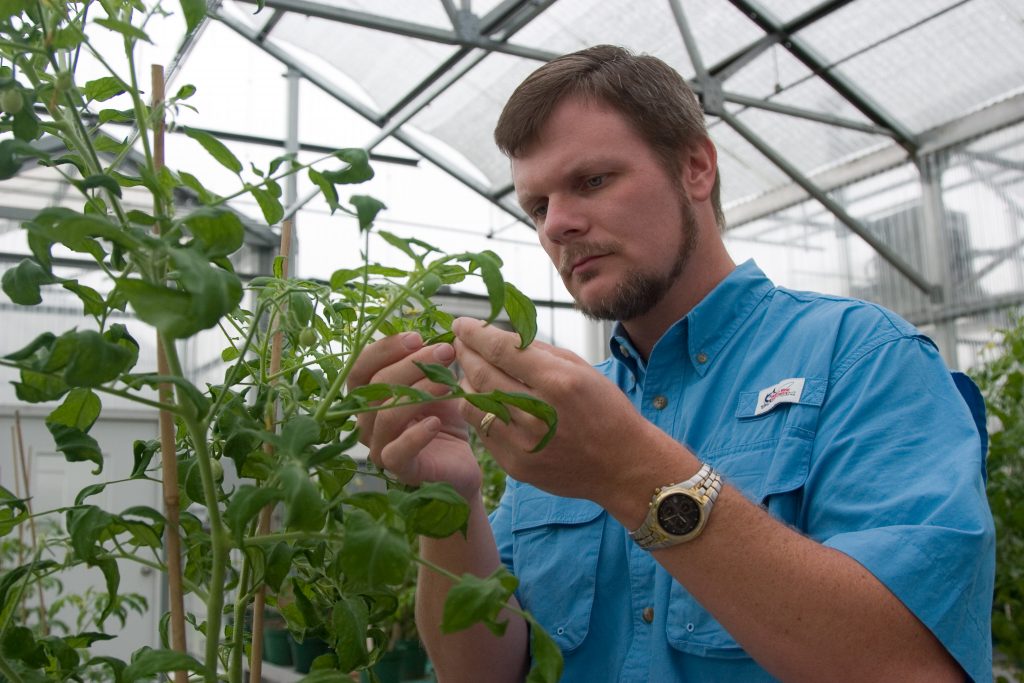
UF/IFAS Photo: Tyler Jones
By Clint Thompson
Fumigation remains a key component of a Florida tomato grower’s management program for nematodes and fusarium wilt disease. It is just not the silver bullet.
Gary Vallad, professor of Plant Pathology at the UF/IFAS GCREC, stresses that fumigation programs that producers implement are just a stopgap measure until resistant varieties are developed.
“This is something we’ve been working on for 10 years. With the transition away from methyl bromide, growers are starting to see all kinds of issues reemerging. A lot of that comes down to the fumigants that we have, not having the same volatility so they’re not able to move through the soil as efficiently as methyl bromide did. What we’re trying to do now is take the tools that we have and see the best ways to apply them to try to maximize the fumigation zone,” Vallad said.
“No fumigant is 100% effective. What you’re hoping to do between seasons is knock back the pest populations enough that you can get off your crop without having any major yield losses. But over time those pest populations just keep on rebuilding. Once you get these things introduced in your soil, you’re never getting rid of them. The best way to get around that is deploying things that are resistant to it so it’s not an issue.”
Fusarium wilt disease is the top soil-borne disease for tomato growers. According to UF/IFAS, fusarium wilt can cause yellowing symptoms on one side of a plant. But it can infect the entire plant later in the season. Blockage of the vascular system is the main reason the plant wilts.










